Recently tributes have been paid to one of the School’s long-serving housemistresses who had died aged 90. But she was by no means the first member of staff to have a long working association with the School. The School’s history is littered with examples of them. This particular lady put in 32 years (and then continued her association post-retirement) which seems even more impressive when you consider she was in her forties when she began at the School.
Coming in at 33 years, however, we need to go back to the nineteenth century with the first appointed Head Governess in 1862, Sarah Louisa Davis, who informed the governing body in 1895 that she wished to retire. They were most reluctant to accept her wishes but awarded her a pension that equalled her salary at the time. How glorious to retire on full pay!
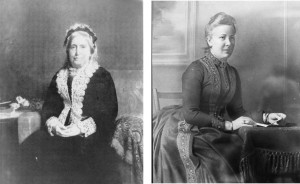
In office during Miss Davis’ tenure was the Matron Eliza Waterman Jarwood. Her length of service is trickier to calculate because she had been a former pupil who became a member of staff. Many of the staff then were former pupils. Indeed in 1934, when the School moved to its current site, all the staff barring one had been former pupils. Miss Davis was one of the exceptions in being an external appointment. In one sense, Eliza’s length of service totalled 68 years because she arrived as a little girl of 9 and never left. She died in 1886, still in post.
The focus of this posting, however, is an earlier Matron who, like Miss Davis, was an external appointee. The above mentioned Eliza served under both matrons. Frances Crook was appointed as Assistant Matron in 1802. This may – or may not! – have resulted in the Great Rebellion as she did seem to be a fairly tough cookie whereas the Matron at the time was perhaps a more gentle soul. Reading between lines is always tricky but it would appear the two women did not really get on. Both probably thought her way was the best. The girls, as any schoolgirls before or since, took full advantage and probably played one off against the other. Whatever the real truth, both women were deemed to be at fault. Rebellion quelled, they continued to work together for another five years although perhaps amicable is not the best word to describe their working relationship. In 1807 the Matron died and Frances Crook was appointed in her place.
Her tenure saw the School through a period of four different monarchs: George III, George IV, William IV and Victoria.

She must have offered a degree of stability to her charges during this period and at a time in their lives which was uncertain. Many of the girls were minus one parent and sometimes both and the School was their home. Although its roll was growing, by 1841 (the first census where the information was published) it still only had 55 pupils and 6 staff. One of these was the Eliza mentioned above and another was her sister Sarah!
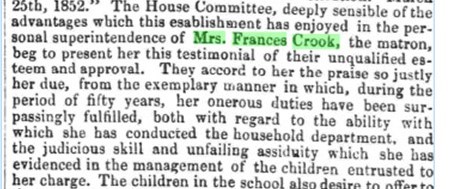
On March 25 1852, presenting her what was described as ‘elegantly emblazoned testimonial’, the School honoured Mrs Crook’s service, albeit described here in somewhat purple prose:
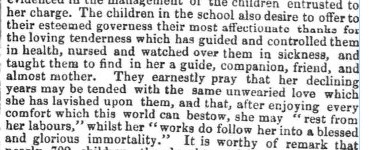
Amongst other attributes, it was said that “she has never been absent from the school twenty-four hours at one time.” (The Era, March 28 1852)

Such ceremonies tend to stray into the sentimental – how could they not? – and the Victorians loved a good wallow in sentimentality. The Era’s almost verbatim report demonstrates the kind of expressions which to modern eyes seem rather too gushing but which were nevertheless heartfelt at the time.
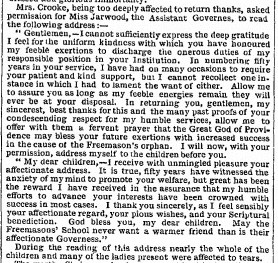
The ceremony concluded with something the children had probably looked forward to most of all: “[They] were regaled with cakes, fruits &c … [and] were to be allowed to amuse themselves with singing and dancing in the evening.” (The Era)
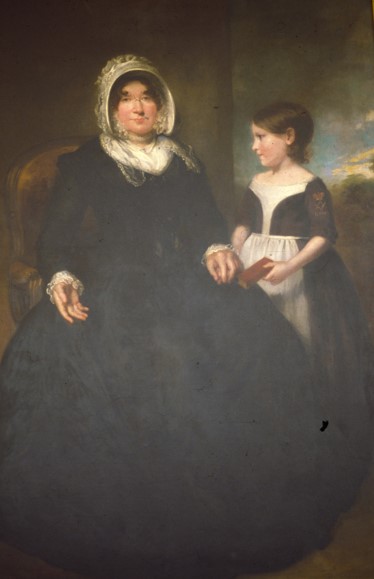
The date of this portrait is uncertain but it is feasible that it was painted to commemorate her 50th jubilee. Of course it would not at all have been the done thing to refer to Mrs Crook’s age throughout all the praise being heaped on her although perhaps the references to the ‘remnant of her days’ may hint that she was beginning to look a little elderly. In the 1841 census, Frances declared herself to be 50 and she added ten years to that in 1851 but neither of these was at all accurate! She would have been 11 when appointed as Assistant Matron if they had been. Sadly, the earnest wish that ‘the day when she should be taken from amongst them might be far distant’ was never likely to be the case. Appointed as Matron on July 30 1807, her age declaration in census returns was never anything more than a ‘mind your own business’ response but when she died in 1854, it was finally revealed that she was 78. It was also never clear whether her title ‘Mrs’ was honorary or not. She was never referred to any differently but she would have joined the School at the age of 26 which would have made her a young widow if she had been married.

Described as ‘zealous and energetic’ in life, there can be little doubt that she was a revered character who took great pride in her girls and appeared to be held in genuine affection by them. She died on 15th October 1854, described unflatteringly as ‘An Aged Matron’ by the Daily News, apparently of some unspecified illness that she had suffered from for some time: she had “long been subjected to a painful disease” declared The Era. At the same time it also stated that she had died after a few hours of illness and there is a fleeting reference more than half a century later of a former pupil of the time declaring that Mrs Crook had died from a cholera outbreak and that a pupil had also died of it at the same time. Neither source is medically sound enough to draw a definitive conclusion so we must just settle for the fact that she had died.

The Era’s guess (“Miss Jarwood … will most probably be the successor”) was exactly right. Eliza Jarwood was appointed as Matron and was another long-serving matron but then she’d already done 25 years before her elevation to matronhood. And her successor, Florence Mason, put in at least 35 years before retirement. In fact, there have been so many that any service less than twenty years is almost regarded as fleeting! Think of all the column inches that it would take if newspaper articles were as lengthy today as they were then …